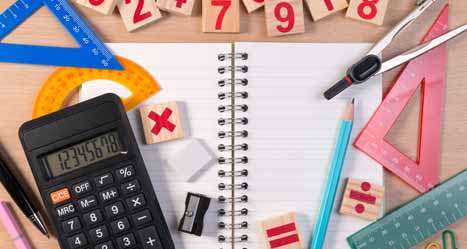I recently started watching this TV drama called Numb3rs. The premise behind the show is that everything in this world has to do with numbers. This guy named Charlie is a college professor and aspiring mathematician. To him the world is all about mathematics. Most problems through his eyes, most normal activities are math problems. Maybe not your typical one plus one is two problems, but problems nonetheless. On the show he works with his brother Don to solve these FBI cases using his math skills. They’ve solved many a problem just using probability theories, statistical analyses, calculus equations, geometry, and a number of other things I couldn’t even begin to describe because my mathematics abilities have only gone so far.

My point in all of this is to start your children early enjoying math. Some children get frustrated with math because they don’t understand it. Some get frustrated with it because they don’t understand the word problems. I loved math growing up although I didn’t like word problems. I still don’t.
To this day I also don’t like doing geometric proofs. To be honest I thought it was stupid. Why reprove something that’s already proven?!?! Argh!!! Needless to say that was a frustrating year of high school for me mathematically. Anyway, I loved algebra, I loved calculus… I just love numbers. What I love even more is that I love to see numbers at work.
I remember once I was in a recording studio and I was helping a friend put in a glass door. This recording studio was in a home basement and I was assisting by doing some measurements and such. One thing we were trying to see was what the angle of incline was from the ceiling to the slot where the door would have to go… then it happened! A light bulb went off in my head – trigonometry. I didn’t even need a protractor; I measured the angle of the incline in the ceiling, then measured the straight line adjacent to it, then made a triangle and did the calculations using my graphing calculator. I was too geeked that I could actually use trigonometry in a real-life situation like that!
I think that’s the problem with learning math in the classroom though. It’s hard to learn the life application of math in the classroom by doing a bunch of problems. You need to be out in the world and solve real problems with math, not just a bunch of equations and trying to find what x is (most of the time x will be zero or one, remember that for your next quiz… just kidding). Seriously though, imagine a man that’s in business doing lawn and garden work. He may want to create a way to water lawns faster than he already does.
That sounds like an algebra problem. If you factor in inclement weather conditions, perhaps it becomes a calculus problem. If you factor wind conditions, then it may become a statistics problem. My point is, true math learning requires real-world application… not just solving a bunch of problems in a book and checking the answer guide to see if you got the answer right.
Math is used in many practical applications that children are unaware of. Their favorite video games are math-based. If you’ve ever played bowling, it’s mostly geometry with a touch of physics. The same goes for pool… and archery… and tennis… and perhaps football… basketball… baseball, pretty much every sport uses math in some way. So if you have a child or teenager who wants to become a better athlete, tell them to get involved in math more and then apply it to their sport.
There was a movie where a girl used science to improve people’s ability to ice-skate. She came up with algorithms in order to show people where they were messing up in their form. It’s nothing more than math problems at work. Music is an example of math as well. Learning key signatures, counting time, playing sheet music, hand coordination, hand fingerings, playing percussion… all of these things are mathematically-oriented.
Parents do your best to make math fun for your children. They’ll need it when they get older and need to do their own accounting, their own budgeting, their own science experiments, whatever it is. There are many ways you can incorporate math in the home. For example, dishwashing is a math problem. Edging the grass is a math problem. Vacuuming the rug is a math problem. Painting the walls is a math problem. Raking the leaves is definitely a math problem. Math is all around you, numbers are all around you.

They used to say that there were three R’s that were important in a child’s beginning stages of learning – reading, writing, and arithmetic. If you can get that third R imparted into your child and have them thinking about things numerically and creatively, there is nothing they can’t solve.